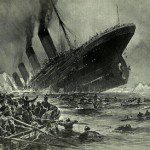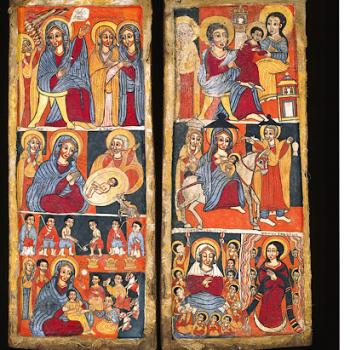The early 1960’s were a hopeful time . . . the last moment when World War II liberalism, Roosevelt’s coalition, ran the world and people could believe without causing laughter that Science would solve all our problems. The civilized world would spread and democratic values in the United Nations would solve rather than cause all the world’s problems. . . better living through chemistry before that meant drug abuse. The Dick V an Dyke show made suburban living look hip and racial reconciliation would just be a matter for reasonable people on all sides being reasonable. Sex was not yet the ultimate good and fairly traditional moral positions were defended because they worked.
All of this would be endearing if the moral foundation for the society, the Christendom that won the War, hadn’t been hollowed out. Mass was for the masses while the elite would worship the high culture that religion had created. Evening prayers may not be true, but they are traditional, beautiful, and civilized. As for sustaining quality: who would stop reading Shakespeare when Shakespeare was so great?

As Peter Beagle said the late sixties were no fouler than the fifties and early sixties, they just reaped the fifties foul harvest. We have been fraying at the edges ever since . . . creating a twilight age where people with money live better and better lives, but the majority are sinking into ugly hedonism and despair. Meanwhile, the old colonies are restive, rejecting moral colonialism as they did political colonialism and reclaiming their cultures.
This can be ugly as well as beautiful, but the dream that everyone would become a happy suburbanite in a reasonable world governed by Scientists has faded. It had to fade because it was ludicrous, but it was a Christian heresy and so was seductive to many. Christianity taught the need for redemption and a hope for the future, but Science could not replace Jesus and Levittown could not be the New Jerusalem.
Walt sensed the failure of the liberal order, though he was unclear what to do about it. Vague religiosity was inadequate in the face of the Soviet Union and mere nostalgia would not be able to cope with scientific advances. Yet for a short time it was possible with the old liberals to have hope and this film came from that time. The animation is beautiful, the music classic Disney, and the storytelling tight. Dalmatians was not a cutting edge film, but it was still “cool” when it came out. “Adult” entertainment had not yet rejected the wholesome for Klute.
The limits of Walt’s worldview are evident at this time. 101 Dalmatians is not set in the England of the Beatles, but of the Blitz survivors. England is still plucky and there is no sign of “cool Britannia.” The old animals are War veterans while the young dogs are their respectful heirs.
This world would vanish very soon . . . Mary Poppins would be a last gasp and Walt would die soon enough with the world he helped create.
What did Walt teach me?
Walt had long taught me that the natural world was here to enjoy and conserve, but not here to exploit. 101 Dalmatians continues the lessons. You might have to kill a deer for food, but nobody would kill Bambi’s mother for sheer fun. Moderns don’t need Dalmatian skins for warmth, so harvesting them is simply devilish and cruel.
Cruella de Vil is the Planned Parenthood of the canine world. She sees the dogs as items to be used and not as creatures to be loved. When see sees the puppies, she sees attached skins and not God’s good creation. Walt could not quite say why he knew this was wrong, but he knew it was wrong. His films reflect the old Christian view, the farmer’s view, that animals are our lesser brothers and sisters. You could not save a dog and let a human die, but it was the job of a human to elevate animals.
The old farmer worked with animals. The factory farms of the near future would use animals like Cruella.
Walt was right, but he lacked the theology to make his case. He assumed the moral goodness of his audience and in 1961 this still worked. There was in Britain as well as America an inherited Christian moral framework. Walt could not realize that soon we would lower babies to match our cruelty to animals. Out of sight we would exploit God’s image and abuse our wards, the animals. Secular ideas could make animals equal to humans . . . an unworkable lie . . . or mere “things” . . . a worse error . . . but has not found the Christian belief that as fellow creatures, animals are equal to us while as God’s children, they are our charges.
We must care for creation.
Walt taught this truth, but he could not ground what he grasped in philosophy. As pop culture turned against his Christian liberalism (more liberal than Christian) and developed a secular hedonism, Walt turned inward. He would build his own lands and worlds looking for order, harmony, beauty, and reason. The end was coming, but in 101 Dalmatians the doom was not apparent yet. The old ways still held and the film remains delightful as a memory of the short time when collecting for UNICEF each Halloween just might end poverty globally.
Oh, Uncle Walt.











